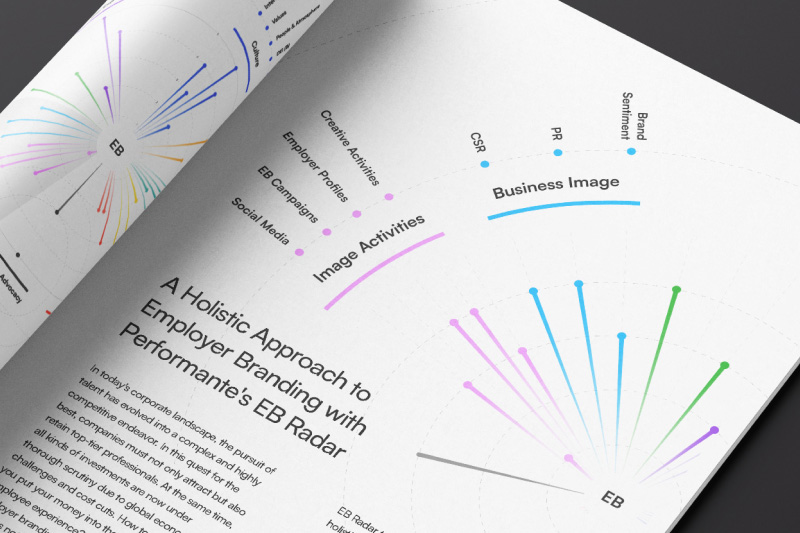Challenges in attracting and retaining fresh profiles
It is well known that the competition for talent is increasingly fierce. Large companies, especially those with a long trajectory, face a number of challenges when it comes to attracting and retaining the best and brightest young talent. Below, we will examine the main challenges and explore solutions to help companies stay ahead of the curve in attracting these profiles.
Structure challenge: large organization, diverse talent
Legacy companies tend to be large and need to address many areas. To do so, they require diversity of talent in terms of skills and knowledge, which means dealing with demographic and generational differences, etc.
How to approach it?
It is essential to understand what motivates people. Although similarities in tastes and needs are relevant, the key is to know the differences. By having a clear understanding of what talent is looking for, it will be easier to implement targeted and focused actions to become an equally attractive employer for everyone. What usually works very well in organizations that employ diverse talent are strategies based on a universal value proposition, which they can adjust to different versions at the tactical level.
Urgency challenge: what you don’t sell today, you won’t sell tomorrow
Mass consumption happens here and now. There is no time to wait or pause to think about the next step. For talent, this means working in intense dynamics, dealing with frequent change, and quickly getting up to speed.
How to approach it?
In this case, the management of internal communication is vital. Having clarity about what is happening in the company and enabling top-down and bottom-up channels becomes relevant because only when people know and understand the reasons, can they execute correctly.
Turnover challenge: more complexity, less commitment
By nature, sales teams tend to rotate more than other roles. This happens because the work is quite demanding and the hours are long. Salespeople often experience complications because they do not have the material or support to achieve their increasingly ambitious goals. All of this causes a decrease in motivation which moves them to look for new professional challenges.
How to approach it?
Companies must provide quality training and the right working tools to help their teams drive sales. Before meeting the higher needs (alignment with the purpose, sense of belonging), make sure that the basic needs are impeccably covered (processes, tools, working conditions).
Balance challenge: different roles, different realities
The environment in each area is different: life in the production plants, for example, is completely different from day-to-day life in the administrative offices. Just as the context changes, the realities of employees also tend to vary. Companies must maintain balance across the different conditions of each group.
How to approach it?
Starting from the leadership areas, companies that want to overcome this challenge should focus on developing diversity and inclusion policies that are attractive and fair. It is important to ensure that they offer benefits that apply to everyone. Team-specific benefits should be offered fairly, both in quantity and value.
Perception challenge: long track record, risk of appearing old-fashioned
In general, companies that have been around for many years can leverage their reputation to attract talent. However, there is still the possibility that they can be perceived as places with established bureaucratic processes, where changes often take longer than expected. For these reasons, such businesses do not necessarily live in the minds of young talent as dream places to work.
How to approach it?
A company with many years of existence has something that only a few can offer: a value proposition based on stability (yes, young talent also wants steadiness!) mixed with opportunities for growth and innovation (if they exist). Even if they are many years old, presenting a modern image is possible! In most cases, it will require redesigning the brand and adjusting to the digital world, which is key to reaching young audiences. But yes, they can do it in a very attractive way.
Bureaucracy challenge: slow processes, unmotivated talent
As the years go by, corporations often implement procedures and policies that, while they may be very functional, can be slow, repetitive and, consequently, unattractive to talent.
How to approach it?
It is a matter of assessing whether the established processes are truly functional. If so, the important thing will be to communicate the house rules correctly and clearly so there are no surprises. Talent needs to know what rules to follow and in which areas they have room to make suggestions. Many people like well-established procedures, and the company should not have to change its processes if they work. The point is to attract the right talent: one that is positively motivated by the company’s operation and culture.
The attractive aspects of a company with a long track record
It’s not all challenges when it comes to communicating with talent when you are a long-established company - there are also many positives that can be leveraged to become more engaging!
-
Companies with long track records tend to do a lot of social responsibility activities - and it’s something that talent loves! These profiles relish the opportunity to participate in something that gives them a higher purpose.
-
Thanks to their large structures, they offer horizontal/vertical growth OPPORTUNITIES. Although not all of them have career plans, these opportunities exist for people who know how to keep themselves motivated.
-
Corporations of this type are excellent places for junior profiles. Being surrounded by so many people with many years of experience puts them in a place of constant learning.
Positioning a company as an attractive employer means promoting its strengths that are relevant to talent in a sincere and consistent way. It sounds simple, but it requires a thorough understanding of the company’s offering, talent needs and activities of the recruiting competition.
Are you part of the HR/communication /marketing department in a company with 50, 100 or more years of history? We would love to support you with your strategy to attract and retain talent - let’s talk about employer branding!





